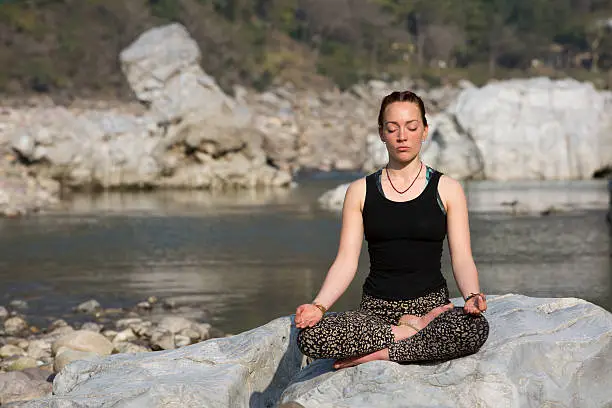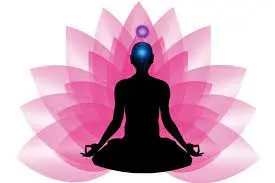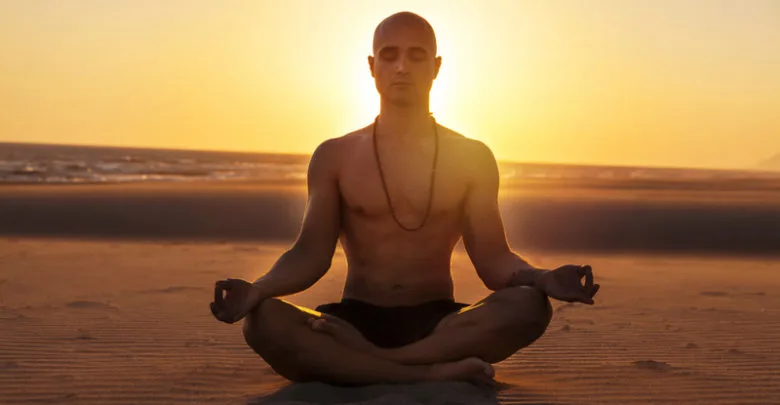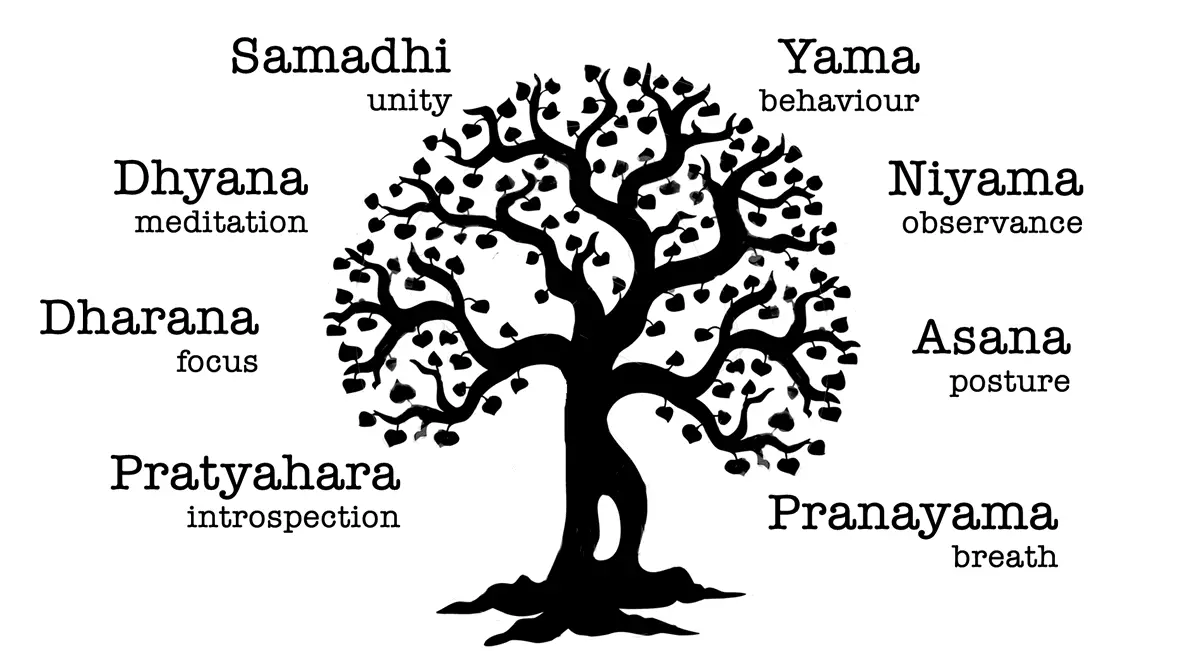In today’s busy world full of noise and stress, finding inner calm and balance can feel like a far-off goal. But there’s a timeless solution: yoga. This ancient practice holds the key to inner harmony and understanding ourselves better. At its core are the 8 limbs of yoga, a set of ideas laid out by a wise person named Patanjali in the Yoga Sutras.
These eight limbs of yoga are like a roadmap for living a meaningful life. They guide us on a journey of self-discovery and growth. Each limb focuses on different parts of our lives, helping us improve our physical health, clear our minds, handle our emotions, and connect with something bigger than ourselves.
From learning how to treat others with kindness to simple practices that help us breathe better and relax, the 8 Limbs of Yoga show us how to navigate life’s ups and downs. By exploring each limb, we embark on a journey to become our best selves, finding balance and unlocking our true potential.
Join us as we dive into the wisdom of the Eight Limbs of Yoga. Let’s uncover timeless truths that can light up our lives and help us become stronger, more connected, and at peace with ourselves and the world around us.
Contents
- 1 Who Introduced 8 Limbs of Yoga
- 1.1 IMPORTANT OF Eight Limbs of Yoga
- 1.2 What are te 8 limbs of yoga
- 1.3 Yama (यम): Ethical Restraints :-
- 1.4 Niyama (नियम): Observances
- 1.5 Asana (आसन): Physical Postures:-
- 1.6 Pranayama (प्राणायाम): Breath Control
- 1.7 Pratyahara (प्रत्याहार): Withdrawal of the Senses
- 1.8 Dharana (धारणा): Concentration
- 1.9 Dhyana (ध्यान): Meditation
- 1.10 Samadhi (समाधि): Enlightenment
Who Introduced 8 Limbs of Yoga

The 8 limbs of Yoga, also known as eight limbs of ashtanga yoga, were introduced by a wise person named Maharishi Patanjali a long time ago. He wrote something called the Yoga Sutras, which is like a big book that talks about yoga philosophy and practices.
The word “sutra” is like saying a small, smart thought that’s easy to remember. It’s kind of like the word “suture,” which means stitching things together. Patanjali’s sutras are like stitches that bring together all the important ideas of yoga..
Patanjali’s teachings have been fundamental in the world of yoga. Eight limbs of yoga helped many people on their journey of self-discovery and finding happiness.
Patanjali divided his Yoga Sutra into four parts or sections, called “padas.” In the second section, known as Sadhana Pada, he talks about the eight-fold path of yoga, calling it “Ashtanga yoga.”
The 8 Limbs of Yoga are really important for a few reasons:
- Feeling Balanced: These limbs help us with lots of different parts of life, like being a good person, staying healthy, thinking clearly, dealing with emotions, and feeling connected to something bigger. When we practice these limbs every day, we can feel more balanced and complete in our lives.
- Helping Us Live Well: The eight limbs of Ashtanga Yoga us practical advice for living a good life. They teach us how to be kind, disciplined, aware of ourselves, and peaceful inside. This helps us handle life’s ups and downs better and make wise choices.
- Finding Our True Selves: The 8 limbs of yoga show us a way to understand who we are and what life is about. By doing things like meditation, controlling our breath, and living ethically, we can get a deeper understanding of ourselves and feel more connected to everything around us.
- Bringing Everything Together: When we practice the Eight Limbs, we learn to connect our body, mind, and spirit. This makes us feel more in tune with ourselves and helps us live with more harmony and purpose.
- For Everyone: These principles aren’t just for one religion or group of people. They’re for everyone, no matter where they come from or what they believe. They offer a way for anyone to grow and become a better person.
- Timeless Lessons: The wisdom of the Eight Limbs of Yoga has been around for a long time and it still helps people today. It’s like a guide that’s been passed down through generations, helping us discover more about ourselves and find peace and meaning in life.
Did You Know:- Top Schools for Yoga Teacher Training in Bali
What are te 8 limbs of yoga
- Yama (यम): Ethical Restraints
- Niyama (नियम): Observances
- Asana (आसन): Physical Postures
- Pranayama (प्राणायाम): Breath Control
- Pratyahara (प्रत्याहार): Withdrawal of the Senses
- Dharana (धारणा): Concentration
- Dhyana (ध्यान): Meditation
- Samadhi (समाधि): Enlightenment
Yama (यम): Ethical Restraints :-

Yama, the first limb of the eight limbs of Ashtanga yoga focuses on ethical restraints or moral principles that guide our interactions with the world and others. It’s about how we behave and treat others.
- Ahimsa (अहिंसा): Non-violence – This principle teaches us to avoid causing harm to others or ourselves, both physically and mentally. It encourages kindness, compassion, and empathy towards all living beings.
- Satya (सत्य): Truthfulness – Satya emphasizes the importance of being honest and truthful in our thoughts, words, and actions. It encourages integrity and transparency in all our interactions.
- Asteya (अस्तेय): Non-stealing – Asteya teaches us to refrain from stealing or taking what does not rightfully belong to us. It promotes respect for others’ property and fosters a sense of contentment with what we have.
- Brahmacharya (ब्रह्मचर्य): Celibacy or Moderation – Brahmacharya encourages us to practice moderation and control over our senses, particularly in matters related to sexual energy. It emphasizes channeling our energy towards spiritual growth and higher pursuits.
- Aparigraha (अपरिग्रह): Non-possessiveness – Aparigraha teaches us to let go of greed, attachment, and possessiveness towards material possessions. It promotes simplicity, contentment, and detachment from material wealth.
Niyama (नियम): Observances

Niyama, the second limb 8 limbs of yoga of focuses on personal observances or self-discipline aimed at spiritual development and inner growth. It’s about how we cultivate positive qualities and habits within ourselves to enhance our well-being.
- Saucha (शौच): Cleanliness – Saucha involves both external and internal cleanliness. Externally, it refers to maintaining cleanliness in our surroundings, such as our home and personal hygiene. Internally, it involves purifying our thoughts, emotions, and intentions.
- Santosha (संतोष): Contentment – Santosha encourages us to be content and satisfied with what we have in life, rather than constantly seeking external sources of happiness. It involves cultivating gratitude for the present moment and finding joy in simplicity.
- Tapas (तपस): Self-discipline – Tapas refers to the practice of self-discipline and perseverance in pursuing our goals and aspirations. It involves making conscious efforts to overcome obstacles, cultivate inner strength, and stay committed to our spiritual path.
- Svadhyaya (स्वाध्याय): Self-study – Svadhyaya involves the study of sacred texts, scriptures, and spiritual teachings for self-reflection and self-discovery. It also includes introspection and self-inquiry to understand our thoughts, beliefs, and patterns of behavior.
- Ishvara Pranidhana (ईश्वर प्रणिधान): Surrender to the Divine – Ishvara Pranidhana is the practice of surrendering to a higher power or divine consciousness. It involves letting go of ego and trusting in the natural flow of life, recognizing that there is a greater purpose beyond our individual desires.
Asana (आसन): Physical Postures:-

Yoga Asana, the third limb eight limbs of yoga is often referred to as physical postures or poses. It forms an integral part of the yogic journey, offering practitioners a means to connect deeply with their bodies while simultaneously cultivating mindfulness and inner awareness.
- Mind-Body Connection: Asanas facilitate a deeper connection between the body and mind. Individuals cultivate mindfulness and present-moment awareness by focusing on the alignment of the body, breath, and movement during yoga practice. This integration of body and mind promotes a sense of inner harmony and balance.
- Stress Reduction: Asanas are effective tools for reducing stress and tension in the body and mind. Through gentle stretching, conscious breathing, and relaxation techniques incorporated into yoga poses, individuals can release physical and mental tension, promoting a state of calm and relaxation.
- Emotional Well-being: Asanas can have a profound impact on emotional well-being. The practice of yoga poses stimulates the release of endorphins, neurotransmitters that promote feelings of happiness and well-being. Additionally, asanas help calm the nervous system, reduce anxiety, and improve mood, leading to greater emotional balance and resilience.
- Spiritual Growth: While primarily focused on the physical body, the practice of asanas also supports spiritual growth and self-discovery. As individuals deepen their yoga practice, they may experience moments of introspection, insight, and connection to their inner selves. Asanas provide a pathway for individuals to explore the deeper dimensions of their being and cultivate a sense of inner peace and spiritual awareness.
Pranayama (प्राणायाम): Breath Control

Pranayama, the fourth limb 8 limbs of yoga of focuses on breath control and regulation. It involves various breathing techniques and exercises aimed at harnessing the breath to enhance physical, mental, and spiritual well-being.
- Life Force Energy: In yoga philosophy, “prana” refers to the life force energy that permeates all living beings. Pranayama practices help individuals manipulate and channel this vital energy for various purposes, including healing, vitality, and spiritual growth.
- Breath Awareness: Pranayama techniques emphasize conscious awareness of the breath. By paying attention to the rhythm, depth, and quality of the breath, practitioners develop mindfulness and presence in the present moment. This heightened awareness of the breath serves as a bridge between the body and mind, promoting relaxation and mental clarity.
- Stress Reduction: Pranayama practices are effective tools for reducing stress and anxiety. By slowing down and deepening the breath, individuals activate the body’s relaxation response, triggering the parasympathetic nervous system. This induces a state of calmness and relaxation, alleviating symptoms of stress-related disorders and promoting overall well-being.
- Energy Regulation: Pranayama techniques help regulate the flow of prana or life force energy within the body. By manipulating the breath through techniques such as alternate nostril breathing, kapalabhati, and ujjayi breath, practitioners can balance and harmonize the body’s energy centers (chakras), promoting vitality and vitality.
Read More Blog:- Yoga Teacher Training in Thailand
Pratyahara (प्रत्याहार): Withdrawal of the Senses

Pratyahara, the fifth limb of the 8 limbs of yoga, is often described as the “withdrawal of the senses.” It involves consciously turning our attention inward by detaching from external stimuli and sensory distractions.
- Sense Control: Pratyahara teaches us to control our senses and reduce their influence on our thoughts, emotions, and actions. By withdrawing our attention from external stimuli, such as sights, sounds, tastes, smells, and tactile sensations, we create a space for inner reflection and self-awareness.
- Mindfulness: Pratyahara practices cultivate mindfulness and present-moment awareness. By detaching from the constant stream of sensory input, we become more attuned to our internal experiences, thoughts, and emotions. This heightened awareness allows us to observe our inner landscape without being swept away by external distractions.
- Inner Peace: Pratyahara promotes a sense of inner peace and tranquility. By withdrawing from external distractions, we create a sanctuary within ourselves where we can find refuge from the busyness and chaos of the outside world. This inner sanctuary becomes a source of stability and calmness, even in external challenges.
- Concentration: Pratyahara is an essential precursor to concentration (dharana) and meditation (dhyana). By withdrawing our senses and reducing mental chatter, we create the conditions for deep concentration and focused attention. This concentration is necessary for accessing deeper states of meditation and self-realization.
Dharana (धारणा): Concentration

Dharana, the sixth limb of the eight limbs of yoga, refers to the practice of concentration or focused attention. It involves directing the mind towards a single point of focus, such as an object, image, sound, or thought, with unwavering attention.
- Focused Attention: Dharana teaches practitioners to concentrate their attention on a specific object or point of focus. By directing the mind towards a single point, individuals cultivate mental discipline and focus, which is essential for deeper stages of meditation and self-awareness.
- Mindfulness: Dharana promotes mindfulness and present-moment awareness. By concentrating on the present moment and the chosen object of focus, practitioners learn to quiet the mental chatter and distractions of the mind, leading to a state of inner stillness and clarity.
- Enhanced Concentration: Regular practice of Dharana strengthens the power of concentration. By training the mind to stay focused on a single point, individuals develop the ability to sustain
- Inner Stillness: Through the practice of Dharana, individuals cultivate inner stillness and tranquility. By learning to quiet the fluctuations of the mind and focus on the present moment, practitioners experience a sense of peace, contentment, and inner harmony.
Dhyana (ध्यान): Meditation

Dhyana, the seventh limb of the 8 limbs of yoga, is commonly referred to as meditation. It is a practice that involves deep contemplation and sustained focus on a specific object, thought, or sensation
- Emotional Balance: Dhyana promotes emotional balance and resilience. Through regular meditation practice, individuals develop the ability to observe their thoughts and emotions without judgment or attachment. This allows for greater emotional regulation and a sense of inner peace, even in challenging situations.
- Spiritual Growth: Dhyana is a pathway to spiritual growth and self-realization. By delving into the depths of consciousness through meditation, individuals connect with their inner wisdom and intuition. This journey of self-discovery leads to profound insights, personal transformation, and a deeper understanding of one’s true nature.
- Focused Awareness: Dhyana involves focused awareness of a chosen object of meditation. This could be the breath, a mantra, a candle flame, or any other point of focus. By directing the mind towards a single point, practitioners deepen their concentration and mindfulness.
- Mind-Body Connection: Dhyana strengthens the connection between the body and mind. Through mindful meditation practices, individuals become more attuned to the sensations, emotions, and thoughts arising within them. This heightened awareness fosters self-understanding and self-awareness.
Samadhi (समाधि): Enlightenment

Samadhi, the eighth and final limb 8 limbs of yoga of is often described as the pinnacle of the yogic journey, representing a state of profound spiritual realization and enlightenment
- Union with the Divine: Samadhi is the culmination of the yogic path, representing a state of union with the divine or ultimate reality. In this state, the individual transcends the limitations of the ego and experiences a profound sense of oneness with the universe.
- Transcendence of Dualities: Samadhi is characterized by the transcendence of dualities such as pleasure and pain, success and failure, and self and others. In this state of profound inner peace, the practitioner experiences a sense of unity and interconnectedness with all beings.
- Bliss and Joy: Samadhi is often accompanied by feelings of bliss, joy, and ecstasy. In this state of heightened awareness, the individual experiences a profound sense of happiness and fulfillment that transcends ordinary sensory experiences.
- Pure Awareness: Samadhi is a state of pure awareness beyond the fluctuations of the mind. In this state, the practitioner experiences a deep sense of clarity, lucidity, and presence, free from the distractions of the external world.
Conclusion:-
In conclusion, the 8 limbs of yoga offer a comprehensive and transformative pathway to holistic well-being and spiritual growth. Through practices such as ethical restraints, self-discipline, physical postures, breath control, withdrawal of the senses, concentration, meditation, and enlightenment, individuals embark on a journey of self-discovery, inner harmony, and profound transformation.
These eight limbs of Ashtanga yoga provide practical tools and principles for cultivating physical health, mental clarity, emotional resilience, and spiritual awakening. Eight limbs of yoga individuals in navigating the complexities of existence and uncovering the deeper truths of their being.
